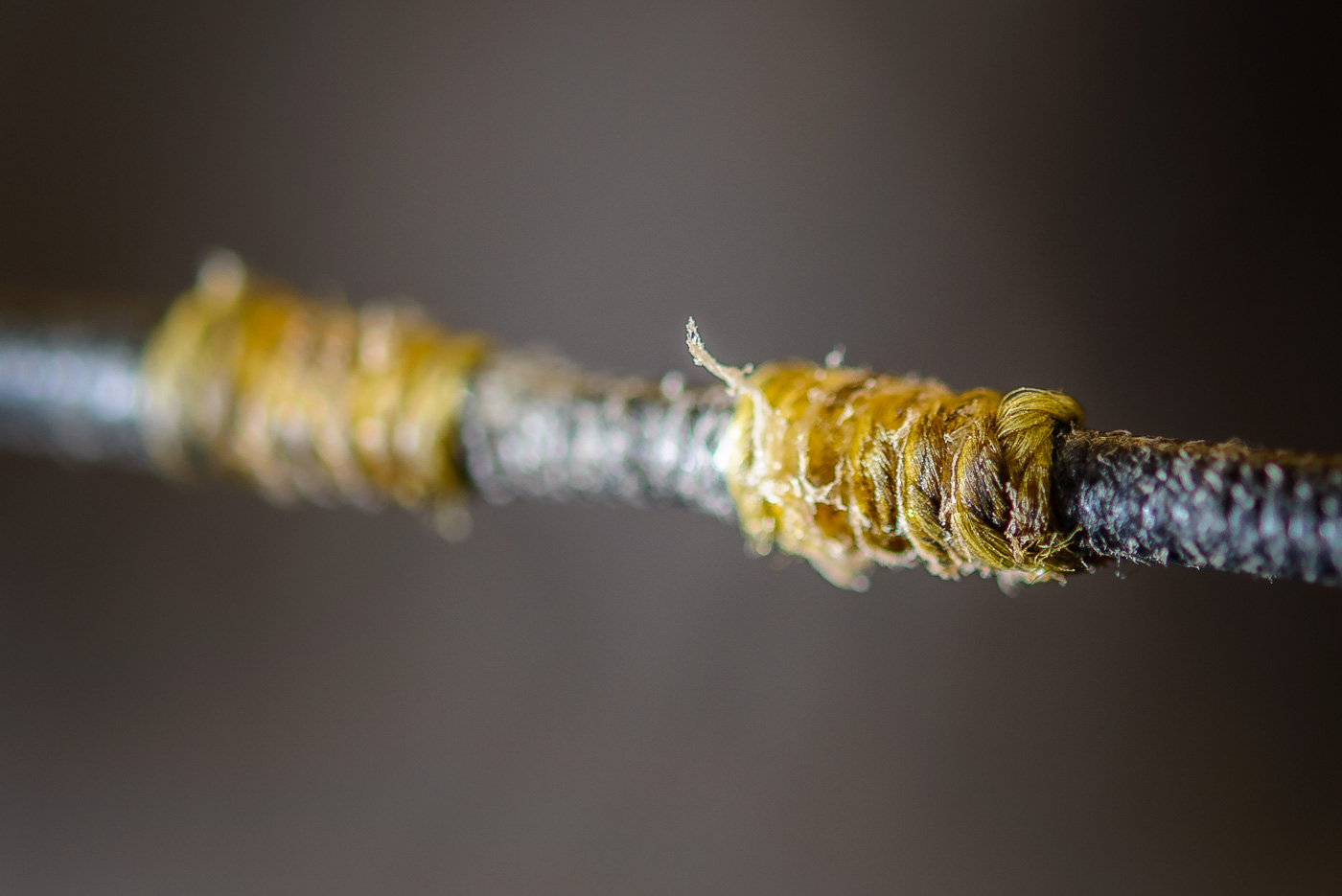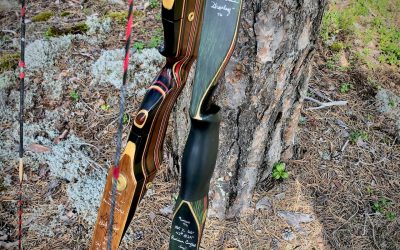How important is the bowstring to your bow? Without a string, a bow simply doesn’t work. It is the most vital part of your bow. Perhaps that’s why there’s so much to ask and learn about it.
When it comes to bowstrings, there are many common questions that arise from both beginners and experienced archers. Instead of writing a lengthy and detailed explanation about everything related to a bowstring, we’ll focus on answering the most frequently asked questions here. We also want to mention that for this article, we’ve excluded the compound bow, as it is more complicated and requires additional expertise to repair or replace the string. We will cover compound bows in a separate article.
What types of bowstrings are there?
– Today, there are mainly two different methods used for making bowstrings. One is called the “flemish twist,” which looks like a braided string, and the other is called the “endless-loop” model. A flemish string has braided loops, while an endless-loop string has straight fibers in the loop, covered with the same thread used for the center serving.
Does it matter for my shooting whether I use a flemish string or an endless-loop string?
– No. Many traditional archers (longbow and instinctive bow shooters) tend to use flemish strings for aesthetic reasons and tradition. An endless-loop string is almost exclusively used for Barebow or Recurve shooting. Shooting-wise, there’s no significant difference between the two types. However, it’s worth mentioning that it’s easier to make two identical endless-loop strings. One thing to note is that with a new flemish string, you should check the string height often, as it may stretch over time depending on its quality.
Is there a big difference between using a thick string versus a thin one?
– Yes. First and foremost, you should match the thickness of the string to the strength of your bow. Consult your coach or archery shop for advice. A thin string is often much faster but also livelier and less forgiving. A thicker string is slower but more forgiving. For wooden bows, we don’t recommend using a string that’s too thin, as it could potentially damage the bow.
Does the material of the string affect its performance?
– Absolutely. It greatly influences the speed of the arrow, the sound, the vibrations in the bow, and much more. When it comes to string materials, elasticity is often discussed. The only bow type that benefits from a stiff string is the compound bow. All other bow types perform better with a slightly more elastic string. It’s often said that self-bows (wooden bows) must have a string made of Dacron (high elasticity) to avoid breaking. However, this information contradicts the properties of historical string materials. In the past, strings were made from hemp and linen, whose material properties resemble today’s stiffer materials like Spectra and Dyneema (often called fast-flight), rather than the properties of Dacron.
Does it matter how many twists I have in my string?
– Yes. A tightly twisted string behaves somewhat rubbery and loses speed. It can also sound dull and feel strange to shoot with. A loosely twisted string can create several problems. With a flemish string, the loops can twist open. This can end badly. A loosely twisted endless-loop string will unfurl after the shot, slowing down the speed and, in the worst case, altering the arrow’s flight direction. You can also adjust the string length by adding or reducing twists (string height). A “rule of thumb” for the number of twists on a string is 1/2 to 3/4 twists per inch (string length, NOT bow length).
Do string silencers reduce arrow speed?
– Not really. It depends on the type of string silencers you use. If you have large yarn balls, it will reduce the speed. If you use whiskers or small Black Widow “spiders,” the speed difference is negligible. The placement of the silencers also matters. A good distance from the string loops is 10-12 inches. At this distance, the string moves minimally from the bow, so the effect on speed is minimal.
Why should I use string silencers?
– String silencers are a matter of personal preference and are used only on longbows and instinctive bows. (For Recurve and Barebow, you should use Limbsavers instead.) They will definitely make your bow quieter and also reduce vibrations, so we highly recommend using them.
How often should I replace my string?
– The string material itself doesn’t age, but it can wear out from exposure to sunlight or improper storage. However, it will wear out with use. When you notice that your string is worn, replace it with a new one. It’s important to check your string loops, ideally before every shoot. If the string breaks at the loops during a full draw, it’s a bad situation. If you take care of your string and wax it regularly, it will last longer. But remember to inspect your string’s quality when waxing it. A worn but waxed string may look better than it really is. We don’t recommend waxing the string loops of any type of string. Tip: If you buy a used bow with a string, replace it with a new one to ensure the string is fresh.
Are there different types of wax?
– Yes. Not so much in functionality, but in feel. For example, if you’re making your own flemish string, we recommend using a harder wax during manufacturing, as a softer wax can become a sticky mess. If you wax your string regularly, don’t mix beeswax with synthetic wax, as these materials don’t blend well and the result will be crumbly.
I’ve heard that many people carry an extra string with them; is that necessary?
– No, but you should. As we mentioned earlier, without a string, your bow won’t work. If the string breaks during a practice session, or even worse, during a competition, your shooting for the day is over. Your spare string should also be pre-stretched, so it doesn’t stretch too much. When you get a new string, get two at once.
How often should I wax my string?
– There’s no set answer to this. Many people never wax their string and simply replace it when it starts to wear out. Some wax it before every practice. A well-waxed string lasts longer because the strands experience less friction against each other, and the wax protects the string from the elements. An unwaxed string shows wear more easily.
Which is better, tied nock points or metal nocks?
– It’s hard to see any significant advantage to using a metal nock point. It wears more on your tab or glove, and there’s a risk of injury to your face. A metal nock point can also be difficult to change or move without tools. When you remove such a nock point, you risk damaging yourself or the string. A tied nock point is much simpler, more flexible, and gentler on your gear. Every archer should have a roll of nocking thread in their bag, and it’s not expensive. You can even tape a temporary nock point when you’re tuning your bow. You can learn how to tie nock points here.
What string accessories are good to have on hand?
– In addition to nocking thread, center serving thread and a serving tool are really useful to have. Before you replace your string, you will probably need a new center serving. They sometimes break or wear out, especially if you change the size of your nocks. If you buy ready-made strings from a shop, it’s especially helpful to know how to make your own center serving. If you twist your shop-bought endless-loop string many times, sometimes the center serving may come loose because the string was thicker when the serving was done.
Can a string look any way I want?
– Yes and no. You can use whatever colors you like on your string, and you can mix them however you want. However, there are rules regarding how high the center serving can be. According to competition regulations, the center serving cannot end at eye level during full draw, as it could potentially be used for aiming. You also can’t add just anything to your string. For example, only compound bows can have peeps, and only longbow and instinctive classes can use string silencers. A recurve can also have a lip or nose mark.
How should I store my string?
– If your string is not stored on your bow, it’s best to either place it in a tube or a small plastic bag. A string that’s left loose in your bow case wears out much faster than one that’s protected in a case or bag.






0 Comments